NASHVILLE — Oct. 29, 2008 — As with many industries today, governments are increasingly affected by the rising cost of goods, unprecedented environmental issues and increasing demand for services amid economic turbulence. That puts pressure on tight budgets and increases scrutiny of how that money is spent.
According to Bruce Harris, Technical Evangelist in Microsoft’s Institute for Advanced Technology in Government, training government works presents even more challenges. Agencies must consider a growing and young workforce that is far more digitally advanced than older generations, and that has new learning styles.
“All of this contributes to the problem of how to plan, predict, train and respond quickly and efficiently while achieving a better return on training dollars,” Harris says. “For governments, especially in critical sectors like defense and homeland security, the need to expand the quality and reach of existing training solutions to retain and better equip employees is vital.”
As public agencies worldwide search for new and better ways to train employees, Harris says one solution may lie in what is increasingly known as the “spatial web” – platforms and technologies such as mobile devices, location-based Web services, search engines, social networking sites, and other services that consider the user’s location in space and time. Spatial web applications are now supporting everything from real estate companies to oil companies, city planners to first responders, law enforcement and the military.
Harris sees a natural extension of these technologies to create simulations that allow people to “virtually” work with one another as they would in everyday life. Nowhere is this kind of evolution more needed than in the public sector.
Recognizing the value that simulation brings, over the past several years the U.S. government alone has invested tens of billions in simulation technologies and systems. In 2007, for example, the U.S. government spent more than $9 billion on modeling and simulation.
Harris says the needs reflected by that spending are continuing to grow.
“Governments have an increasing need to model and simulate a wide range of environments that include transportation models, first responder exercises, military training and operational deployments,” he says. “Microsoft ESP has the potential to play a major role here, because the current state of modeling and simulation is similar to the early days of word processing, database management and desktop publishing — when it was very costly and only a few people in an organization had access to these tools. ESP makes simulation affordable to broad audiences of users, thus increasing the availability of simulation as a training aid to new sets of users who had been priced out of the market previously.”
Based on Microsoft technologies and open industry standards, ESP brings “plug and play” capabilities to commercial off-the-shelf PC-based computer hardware platforms and devices, putting the entire spectrum of training simulations within reach by making them much more affordable and faster to develop or modify.
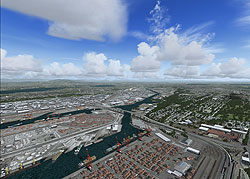
October 28, 2008
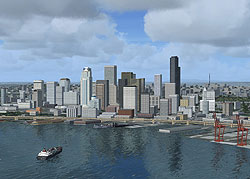
October 28, 2008

October 28, 2008
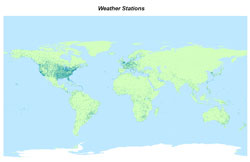
October 28, 2008
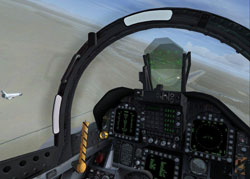
October 28, 2008
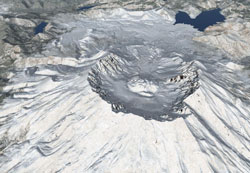
October 28, 2008
“Today, Microsoft is positioned to create a real change in public sector training programs, and we are leading the effort to provide affordable modeling and simulation technology for workers at all levels and skills,” Harris says. “With Microsoft ESP’s powerful capabilities, affordable pricing and flexible licensing, these simulations can be deployed across entire organizations, just like word processors and databases are today.”
Simulating Chaos: Real World Limitations in Training
Harris notes that traditional simulations require so much investment they have been out of reach for all but the most critical applications.
“If you have a multi-billion dollar platform like a submarine, and you only have a handful of them, it makes sense to build a simulation solution so that people don’t mistakenly drive them into sea mountains,” says Harris. “However, simulation technologies have traditionally been beyond the budgets for agencies and organizations whose missions put fewer lives or expensive assets at risk.
There has also been no way to accurately simulate a large disaster response, because there was no way to simulate a crowd of people acting like they would under those circumstances. Nor can current simulations create factors such as traffic, weather, and injury. Today, disaster response rehearsals are often done via “table top exercises” which identify best practices and proper chains of command, but lack any sense of realism or urgency.
“How do you model chaos realistically?” Harris says. “You can’t just shut the Amtrak station down for a day and displace thousands of people. The economic impact is untenable, and getting all the police and fire departments and everyone else to divert their resources to the training exercise is not feasible.”
Harris sees the Holy Grail of training as exercises that help the organization examine and rehearse every component of an emergency accurately and effectively, without shutting down transportation nodes, without redirecting police and fire departments, and without the astronomical expense and logistics of trying to conduct such an exercise with people.
“These entities need to prove out the processes and contingency plans they’ve got in place, the phone numbers, the directions, the chain of command,” he says. “What happens if a certain arterial street or bridge becomes unusable? A simulation is really the only practical way to go through all that.”
Within Reach: New Technologies Bring Virtual World Down to Earth
According to David Boker, senior director of Business Development for Microsoft’s ACES Studio (publishers of Microsoft ESP), a number of factors have combined in recent years to make simulation technology more affordable and more practical. Factor in the relentless rise in available computing power and much more can now be done at the desktop instead of on large mainframes or in simulator training centers.
“It’s really the next generation of employee training productivity,” Boker says. “With a couple of developers, a few weeks’ time and a few thousand dollars, you can now do what had formerly taken a roomful of developers many months and hundreds of thousands of dollars to do. And the simulations they’re able to create are much more realistic, flexible, affordable, and portable.”
Another benefit: because the Microsoft ESP platform is easily reprogrammed, users can more quickly update their environments to run multiple simulations. That’s a big improvement over the expensive, proprietary platforms of the past, which were developed for specific purposes and were costly, difficult to modify, and lacked hardware scalability.
“You no longer have the case where a particular military component may have to pay $10 or $20 million to run one training simulation that’s got a few scenarios built into it,” he says. “Today you can go in and very rapidly add scenarios or change out variables in the environment to deliver a whole new way of looking at problems and rehearsing scenarios.”
Microsoft ESP’s ability to tie into a number of different technologies can also drastically change the way simulations are run. Historically there has been no realistic, low-cost, flexible means to integrate simulations across disciplines and allow users to experience the simulation in concert. But Harris says that is changing, and Microsoft is leading the change.
“We need to be able to land the aircraft, disembark the troops and deploy them into an operational environment, and then provide after action reviews as part of the next planning and training scenarios,” he says. “And it needs to be scalable from the small tactical teams up to the large integrated organizational efforts, such as large disaster preparedness relief work.”
Boker says numerous existing Microsoft products can be used in conjunction with ESP to drive realistic simulations with real geospatial data and compelling simulated environments that can scale from small desktop trainers to large distributed simulation environments. Where today there are only pieces of this vision available in the existing, large, expensive simulation platforms, Microsoft’s products are playing a significant role in bringing it all together.
“Along with ESP, Microsoft has technologies that play into all of these scenarios,” he says. “Our proven ability to populate a simulated environment with geospatially accurate 3D data from Virtual Earth, our ability to manage the data with SQL Server 2008, to enhance security with Windows Vista, and to expand the access and distribution such as we see with mobile devices — we have everything in place to provide these capabilities quickly, and to develop and deploy virtual, “mirror world” environments with accurate and realistic data and scenarios.”
It’s All About Partners: Making the Vision a Virtual Reality
Despite these advances in technology, there remain business and human challenges in bringing virtual training to the mainstream. The modeling and simulation market needs to be thought of in an entirely new way: No longer limited to small numbers of simultaneous users, centralized locations, limited data sets, and interactive options, or highly complex and costly infrastructures.
“Augmenting these more traditional approaches with lighter weight, powerful and more affordable solutions will transform simulation-based training by bringing it to more people in more places on more devices,” Boker says. “Microsoft has the technology and the ability to knit it together, but it’s going to require a significant partner ecosystem to really bring the power of our new open simulation platform to the public sector.”
Harris says Microsoft is not set up to meet the large demands of various government organizations, especially those dealing with classified data systems or large numbers of personnel, “So we’re working with partners to deploy and maintain the technical tools and platforms we bring to the table.”
Harris believes that by making the simulations readily available, easily reconfigurable, and relevant to a broad mission set, Microsoft and its partners will bring sweeping changes to a very traditional industry.
“The ultimate potential is not in replacing what already exists, but broadening the use of games-based technology to transform how people and organizations plan, prepare and execute their mission directives,” Harris says.
The difference is that Microsoft is providing the tools for organizations to build their own environments, or mirror worlds, with real world data, so they can interact with it in a realistic manner.
Says Boker, “If you look at how far and how fast the first-person and multi-person gaming has come in the past few years, you begin to get an idea of where we’re headed with simulation.”




